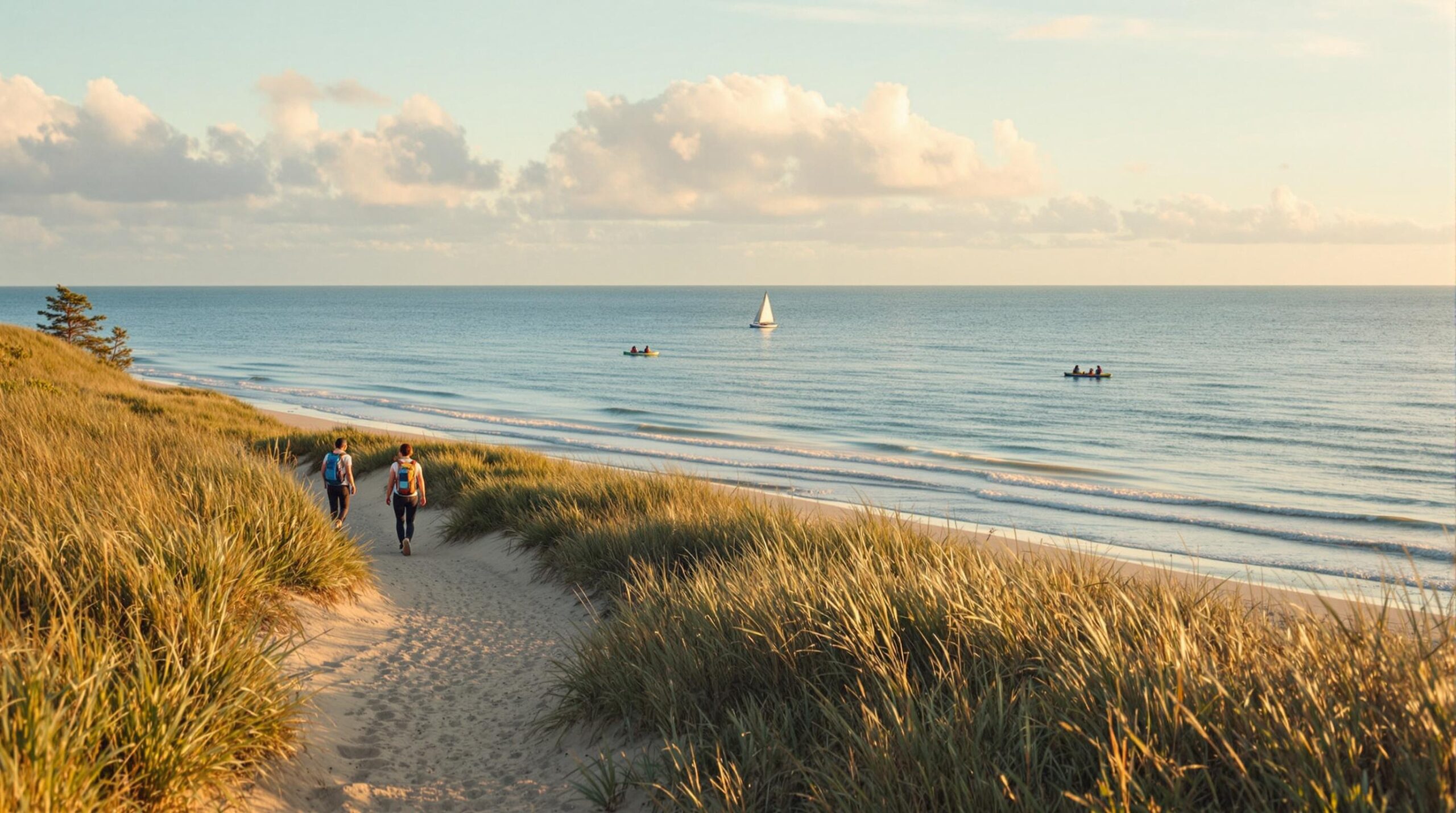Dawn hikers move single file through the mist on Clay Head Nature Trail, treading a footpath where songbirds dart between bayberry and shadbush. Around them, nearly half of Block Island’s nine square miles — 47 percent — is permanently preserved as public open space, according to the island’s tourism page.
For campground, RV park and glamping operators, that level of protection is more than a conservation talking point. It is the backbone of a business model that allows heavy visitor traffic without sacrificing the very scenery guests pay to see.
Local preservation efforts began in the 1970s and today involve The Nature Conservancy, Block Island Conservancy and the Town of New Shoreham, creating a marketing shorthand — “47 percent conserved” — that resonates with eco-minded travelers. The tourism page notes the year-round population is fewer than 1,500 residents, swelling to more than 20,000 on peak summer weekends, illustrating both the revenue potential and the logistical strain that comes with success.
Visitors have free run of about 28 miles of signed hiking trails that cross headlands, glacial outwash plains and maritime forest. Maps are sold at the Chamber of Commerce office in Old Harbor and at The Nature Conservancy on High Street, an easy add-on sale for park check-in desks.
Two routes anchor most itineraries. Clay Head’s 190-acre parcel serves up ocean panoramas and bird-migration views, as detailed in the Clay Head notes. Farther south, the 230-acre Rodman’s Hollow funnels walkers through shrubland to Black Rock Beach and broad Atlantic vistas, according to the same source.
Operators can turn those footfalls into margin. Offering gear-and-service bundles that pair site bookings with pre-reserved bike or trekking-pole rentals, running a micro-shuttle loop between properties and trailheads, deploying QR-code trail companions that upsell lunch kits, posting durable etiquette signs, and booking fee-based guided walks with local naturalists are all plug-and-play tactics for boosting per-guest spend while keeping vehicles off narrow roads.
The shoreline adds another magnet. About 17 miles of public beach line the island, all free of admission, the tourism page confirms. Families gravitate to the continuous sweep of Crescent Beach, which includes lifeguarded Fred Benson Town Beach, Surf Beach, Scotch Beach, Rouse’s Beach and Mansion Beach.
Those seeking drama head to Mohegan Bluffs, where clay cliffs rise roughly 150 feet above the Atlantic and a wooden stairway of more than 100 steps drops to a secluded strand. Erosion continues at two to four feet per year and already forced Southeast Light inland, according to the Bluffs record, a caution for anyone contemplating bluff-top glamping decks.
Water-sport vendors can extend guest dwell time by installing modular foot-pump rinse stations 100 to 150 feet from dunes, centralizing kayaks and SUPs in lockable racks, floating trash pontoons near moorings, accepting timed launch reservations, adding solar hazard beacons and using color-coded flags to separate beginner and advanced paddle zones — measures that marry conservation with ancillary revenue.
Much of that paddling centers on the Great Salt Pond, home to three marinas, roughly 50 acres of anchorage and more than 100 public moorings that support sailing, power-boating, kayaking and paddleboarding. From the water, guests can photograph America’s first offshore wind farm, a five-turbine array completed in 2016 that spins three miles southeast of the island and is visible from Mohegan Bluffs and Southeast Light.
Shoulder seasons in May-June and September-October offer quieter trails and beaches, letting operators smooth occupancy curves. Rules worth flagging in pre-arrival emails include daytime dog bans on lifeguarded beaches in summer, the absence of public campgrounds, and temporary closures that protect nesting piping plovers.
Low-impact signage, guided naturalist walks and floating trash platforms not only protect the resource but also reinforce a brand image guests increasingly demand — stewardship backed by action.
By late afternoon the morning’s hikers are back at the ferry, bikes and paddleboards in tow, their phones full of cliff vistas and trail selfies. Block Island’s 47 percent of preserved land is no static statistic; for outdoor-hospitality businesses, it is an operating system that proves profit and protection can, in fact, share the same shoreline.


